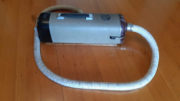 The first dishwasher was invented in America in 1850, Joel Houghton patented a wooden machine with a hand-turned wheel that splashed water on dishes, it was hardly a workable machine, but it was the first patent.
The first dishwasher was invented in America in 1850, Joel Houghton patented a wooden machine with a hand-turned wheel that splashed water on dishes, it was hardly a workable machine, but it was the first patent.
in 1865 L.A. Alexander obtained a patent for a device that used a hand crank and gearing to spin a rack of dishes through the dishwater again this didn’t do to much to clean dirty dishes.
In 1886, Josephine Cochrane proclaims in disgust “If nobody else is going to invent a dishwashing machine, I’ll do it myself.” And she did, Cochrane invented the first practical dishwasher. Cochrane had expected the public to welcome the new invention, which she unveiled at the 1893, World’ Fair, but only the hotels and large restaurants were buying her ideas.
Cochrane’s machine was a hand-operated mechanical dishwasher. As this was before electricity was widespread She founded a company to manufacture these dish washers, which eventually became KitchenAid. other company’s produced dishwashers that were powered by steam and designed for restaurants and caterers. They usually worked by passing the dirty dishes under jets of hot water by means of a conveyor belt or a revolving basket. They were generally inefficient.
While Engineer William Howard Livens received a patent in 1924 for improvements on the dishwasher that would make them more suitable for domestic use, it was not until the 1950’s that dishwashers caught on with the general public. Many of the major manufacturers that are still around today had their own take on the dishwasher now that they could be produced cheaper and in a more usable size. Most of the first dishwashers were of the portable table top variety. Electrolux’s D10 model of 1959 (nicknamed the Round Jar) was so popular it even spawned a knock off version in East Germany.
By the 1970’s under counter models soon became the new standard to the point where by the 1980’s it would be out of the question not to leave a space for one when you designed your new kitchen, in much the same way as you would leave a space for a oven or fridge.




